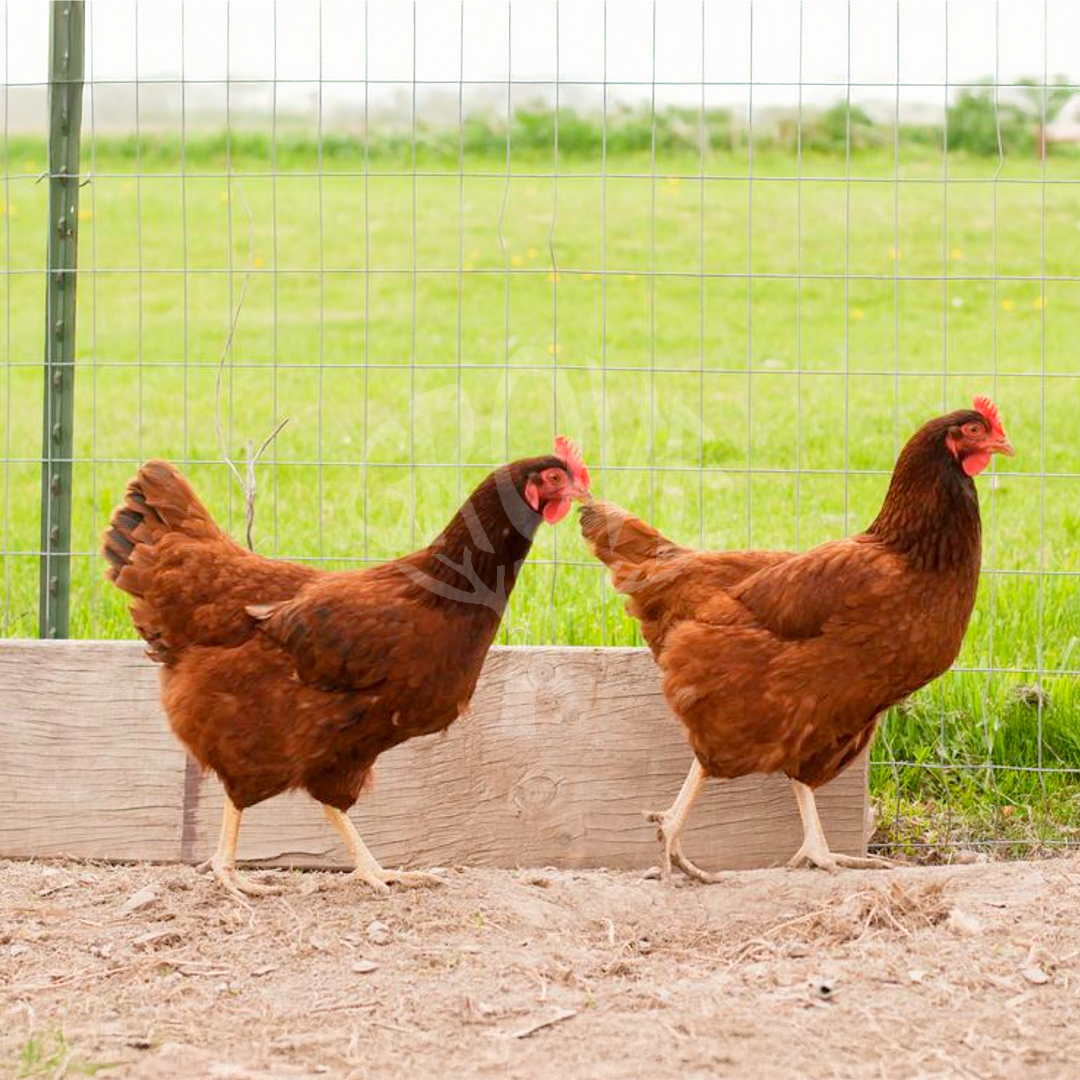
Rhode Island Red Temperament and Behavior in Backyard Settings
Rhode Island Reds (RIR) are one of the most popular backyard chicken breeds, known for their hardiness, friendly personality, and excellent egg production. Whether you’re an urban homesteader or a small-scale poultry keeper, understanding their temperament and behavior in a backyard setting is key to ensuring a happy and productive flock.
Are Rhode Island Reds aggressive or friendly? Do they get along with other chickens? Are they good for free-ranging? Let’s take a deep dive into what makes the Rhode Island Red chicken a great addition to your backyard flock!
Are Rhode Island Reds Friendly Chickens?
RIR are generally curious, active, and intelligent birds. They are not the most affectionate breed, but they are friendly and sociable, especially when handled regularly from a young age. Some even follow their owners around the yard in search of treats.
Unlike docile breeds like Silkies and Orpingtons, RIR have a bold and confident personality. They are not aggressive, but their assertive nature may put them at the top of the pecking order in a mixed flock.
💡 Pro Tip: If you want a Rhode Island Red to be extra friendly, start handling them as chicks and offer treats like mealworms, wheat, or fruit to build trust.
Rhode Island Reds and Other Chickens: Are They Bully Birds?
Rhode Island Reds are active and dominant, meaning they may establish themselves as leaders in a flock. While they are not overly aggressive, they can be bossy toward smaller or timid breeds like Polish, Silkies, or Bantams.
If keeping them in a mixed flock, it’s best to pair them with other active and confident breeds like Australorps, Sussex, Plymouth Rocks, or Wyandottes. Providing plenty of space, multiple feeding areas, and perches can reduce pecking order disputes.
🚨 Warning: Rhode Island Reds should be monitored in small coops, as overcrowding can lead to feather-pecking and dominance issues.
Rhode Island Reds and Free-Ranging: Are They Good Foragers?
If you’re looking for a breed that thrives in a free-range environment, Rhode Island Reds are one of the best choices. They are natural foragers and love to scratch the ground for insects, worms, and seeds.
They cover a lot of ground and keep themselves entertained. They reduce feed costs by supplementing with natural food sources. They are alert and cautious, making them less vulnerable to predators.
Even with their strong survival instincts, they still need protection from hawks, foxes, and roaming dogs. If fully free-ranging isn’t an option, a large, secure run with enrichment activities is ideal.
Do Rhode Island Reds Get Along with Humans?
RIR are friendly but independent birds. They recognize their owners and often run up to them for food. While they are not lap chickens, many enjoy being around people.
Best ways to bond with Rhode Island Reds:
- Hand-feed treats like mealworms or wheat. Spend time in the coop or run so they get used to you. Talk to them softly— they respond well to voices.
- Some Rhode Island Reds tolerate handling, while others prefer to roam freely without much human interaction. Each bird has its own unique personality!
Are Rhode Island Reds Noisy Chickens?
If you’re in an urban or suburban setting, noise level is an important factor. Rhode Island Reds are moderately vocal—they aren’t the loudest, but they do enjoy clucking and chattering throughout the day.
They announce when they lay an egg. They “talk” while foraging and exploring. They may alert the flock if they sense danger.
Compared to breeds like Leghorns or Bantams, Rhode Island Reds are not overly noisy, but they aren’t silent either.
Rhode Island Red Roosters vs. Hens: How Do They Behave?
If you’re considering keeping a Rhode Island Red rooster, you should know that their behavior differs from hens.
Hens are friendly, energetic, good for egg-laying, and rarely aggressive. Roosters can be territorial, protective, and sometimes aggressive toward strangers.
Some Rhode Island Red roosters are calm and gentle, while others may become aggressive, especially during mating season. If keeping a rooster, socializing them from a young age helps reduce aggressive tendencies.
🚨 Tip: If you have children or visitors often, monitor the rooster’s behavior to prevent unwanted aggression.
Egg-Laying Behavior in Backyard Flocks
One of the biggest reasons backyard chicken keepers love Rhode Island Reds is their incredible egg production. They lay 5-6 large brown eggs per week, making them one of the best egg-laying chicken breeds.
They start laying at 18-22 weeks old. They are consistent layers year-round. They produce 250-300 eggs per year.
Rhode Island Reds rarely go broody, which is great for egg collection but not ideal if you want hens to hatch chicks naturally.
Are Rhode Island Reds Good for Beginners?
Yes! RIR are one of the best breeds for beginners because they are low-maintenance, adaptable, and great egg producers.
They are hardy in hot and cold weather. They have a low feed-to-egg ratio (cost-efficient). They are great for small backyard coops or large free-range setups.
If you want a productive, friendly, and self-sufficient chicken, the Rhode Island Red is a top choice.
Final Thoughts: Should You Raise Rhode Island Reds?
Rhode Island Reds are one of the best backyard chickens because of their friendly but independent personality, high egg production, and adaptability.
They are great for free-ranging & backyard flocks. They are friendly but confident—may rule the pecking order. They are low maintenance & excellent egg layers.
If you’re looking for a hardy, productive, and engaging breed, the Rhode Island Red is an amazing choice!
💬 Do you have Rhode Island Reds in your flock? Let us know your experience in the comments! 🐔✨
If you’re looking to add Rhode Island Reds to your flock, check them out here:
